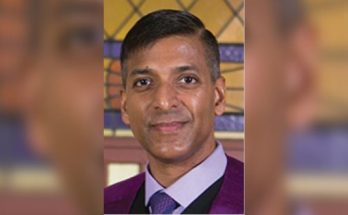By Patrick Green
When I first noticed the statue of San Patricio in the Parroquia, I was quite charmed. Being Irish and being named Patrick, how could I be otherwise? But it did not take long for the thought to occur—what is San Patricio doing in a Mexican Church? That question went unanswered until I started training as a tour guide for the Patronato Pro Niños Historical Walking Tours.
My training taught me that the Mexican people have a soft spot in their hearts for San Patricio and the Irish people. The story goes back to the 1840s and the potato famine in Ireland. The Irish were leaving their motherland in droves. Many ended up in the New England region of the Northeastern United States and—in search of food, clothing, and shelter—joined the United States military.
In 1846, U.S. President James Polk used an alleged boundary dispute with Mexico as a pretext for sending the U.S. military to invade Mexico. In the United States, the invasion became known as the Mexican-American War; in Mexico, it is commonly called the American Intervention. Many Irish immigrants who had joined the U.S. Army soon found themselves in Texas with General Zachary Taylor on the disputed boundary. They engaged in battle, but many found themselves questioning what they were doing. Was not the wealthy and powerful USA taking advantage of their less powerful southern neighbor just like the British had bullied the Irish for centuries? Did not the U.S. military officer corps discriminate horribly against the Irish soldiers? And were not the Mexicans Catholics like the Irish? Many Irish soldiers felt they had more in common with the Mexicans than with the Americans.
History tells that 175 Irish American soldiers defected from the U.S. military and crossed the battle lines to fight for Mexico. They created the San Patricio Battalion and fought with great courage and valor for Mexico. By the end of the war, many had been killed in battle, and the survivors were captured and punished. Forty-eight were hanged for treason; collectively, the largest mass execution in United States history.
Mexicans have never forgotten the sacrifices made for Mexico by the men of the San Patricio Battalion. In fact, there is a small museum in the San Angel section of Mexico City dedicated to keeping the story of the San Patricios alive. Across the street from the museum is a statue of John Riley, the leader of the San Patricios, and a plaque with the names of the men executed for treason.
You can learn more about the history of San Miguel de Allende by taking the Historical Walking Tours from Patronato Pro Niños. All tours are given in English, and no reservations are needed.
Your Guide will be Dali Amaro, who generously takes time from his own tour business to donate his guiding services to Patronato Pro Niños. He is fully certified, bilingual, has over 20 years of guiding experience, and is a native son of San Miguel. Tours take around 2.5 hours, primarily outdoors, on the charming cobblestone streets of downtown San Miguel. You will be expected to wear a mask; please bring one. Your donation of 300 pesos will gratefully be taken onsite.
All 100 percent of tour donations support the important work of Patronato Pro Niños. For over 50 years, Patronato Pro Niños, a Mexican nonprofit organization, has been providing necessary medical, dental, and psychological care to the children of families who cannot afford to provide it for them. Even during the pandemic, in 2021, we provided services to 9,444 children or 14,364 consultations. For private tours, arranged at your convenience, including choice of day and time, contact us at historicwt@patronatoproninos.org or call 415 152 7796. To find out more or to donate, visit our website at www.patronatoproninos.org.
Walking Tour
Historical Walking Tour from Patronato Pro Niños
Mon, Wed, and Fri, gather in front of the Parroquia at 9:30; 10:00am start
300 pesos donation accepted onsite: no need to preregister
All donations go to benefit Patronato Pro Niños




